The Architect Who Documented Thousands of Synagogues: "People Are Unaware of the Stories Behind the Buildings"
Discover the synagogue with two Holy Arks, the one with a unique dome, and the one established in response to an attack in Itamar. Architect Michael Jacobson has taken on the task of surveying thousands of synagogues in Israel.
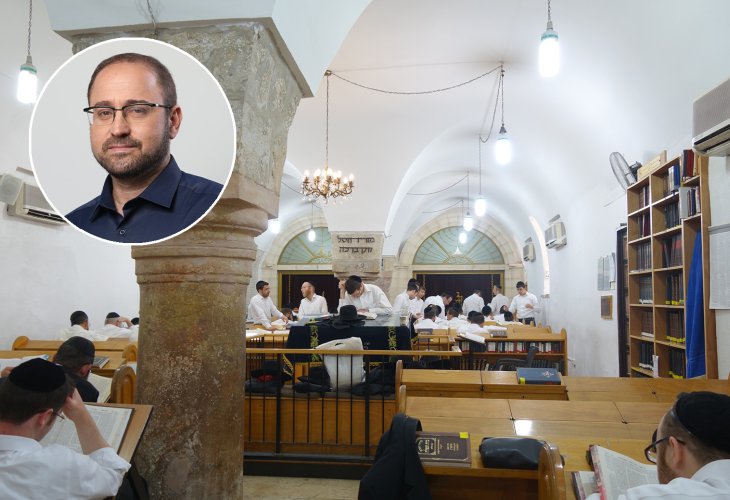 In the circle: Architect Michael Jacobson (Photo: Yanai Yechiel)
In the circle: Architect Michael Jacobson (Photo: Yanai Yechiel)How many synagogues have you visited in your life? It may be hard to count, but even if you add all the synagogues you've visited, or even just passed by absentmindedly, you would struggle to reach the number of synagogues visited by architect Michael Jacobson, who is engaged in urban planning and architecture.
Jacobson is a graduate of architecture studies at Bezalel Academy in Jerusalem, and he completed his master's degree in geography at Tel Aviv University. In 2014, he won the Rechter Prize from the Ministry of Culture, and in 2021, he was honored as a favorite of the Israeli Association for Archives and Information.
In his daily work, he is employed at an architecture firm, but in addition to his routine work, he finds the time to write articles on various aspects of architecture, with a particular focus on surveying synagogues in Israel.
Design for the Students
Is there much to write about synagogues? It turns out there is quite a bit. "Take, for example, the building of Yeshivat Kol Torah in the Bayit Vegan neighborhood of Jerusalem," Jacobson notes, "It appears to be a box-like structure with a large central hall featuring a Holy Ark. While the students are deeply immersed in their studies, unaware of the architecture surrounding them, a deeper look at the building reveals many fascinating and unique elements. The ceiling of the study hall is a sort of interpretation of the traditional dome symbolizing many religious structures over the years. At the same time, the architect endeavored to give the building a modern look by designing a flat dome with openings in places where the roof connects to the dome, allowing natural light into the hall. There's a lot of wisdom here, as it saves on electricity and provides natural light for students sitting all day in a closed hall with artificial lighting."
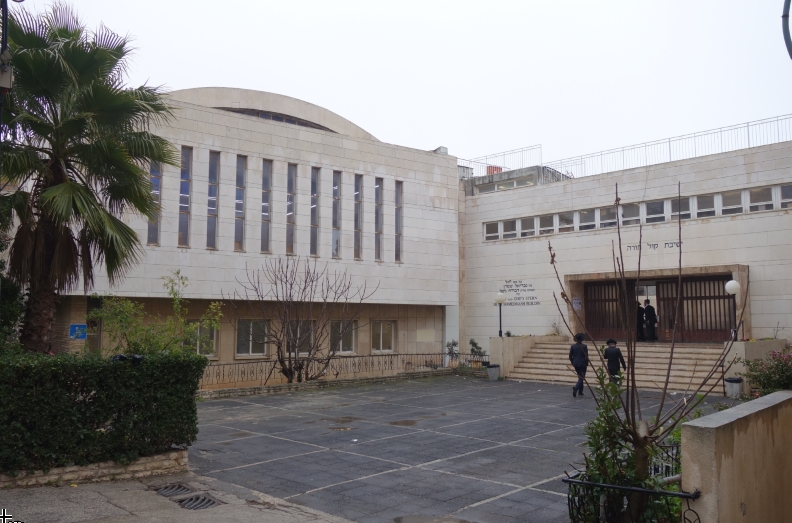 Kol Torah (Photo: Michael Jacobson)
Kol Torah (Photo: Michael Jacobson)Jacobson notes that when you learn about the identity of the architect, there's no surprise. "This is the work of architect Yosef Schenberger, a talented Jew who also designed the Western Wall Plaza after the Six-Day War and specialized in planning mikvahs, synagogues, and yeshivas."
Another special synagogue Jacobson talks about is the Hebrew University Synagogue on the Givat Ram campus in Jerusalem. "In 1965, it was decided to award the Rechter Prize to architects Heinz Rau and David Resnick, who were responsible for planning this university synagogue," he notes. "This was just one of the early works of architect Resnick, who later became one of the country's leading architects and won the Israel Prize."
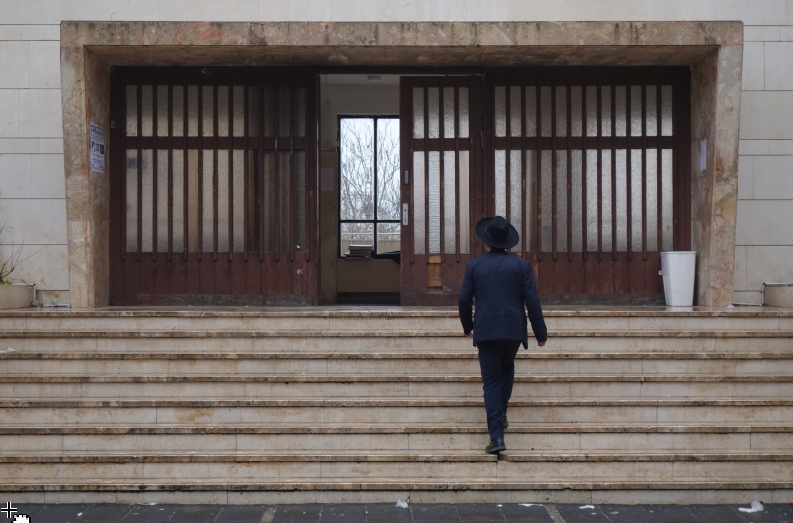 (Photo: Michael Jacobson)
(Photo: Michael Jacobson)On a personal note, Jacobson shares that he enjoys looking at synagogue buildings that are sometimes in the margins or unrecognized. "These are the ones I find important to write about, shedding light on the unknown and renewing details. I want people to read the articles and appreciate the environment they live in. They need to understand that every building has a story, and even in places that seem old-fashioned and mundane, there is light and values."
A Synagogue of Story
"Even behind the structure of the Ramban Synagogue in the Old City of Jerusalem lies a fascinating story," adds Jacobson. "Visitors today can see a kollel where dozens of avreichim study daily, arriving from all over the city. However, it is actually a reconstructed building that was likely originally the Ramban Synagogue when Ramban immigrated to Jerusalem in 1267. The original synagogue was destroyed over the years, and after the Six-Day War in 1967, architect Dan Tanai was tasked with redesigning the location for the returning local community in the Jewish Quarter.
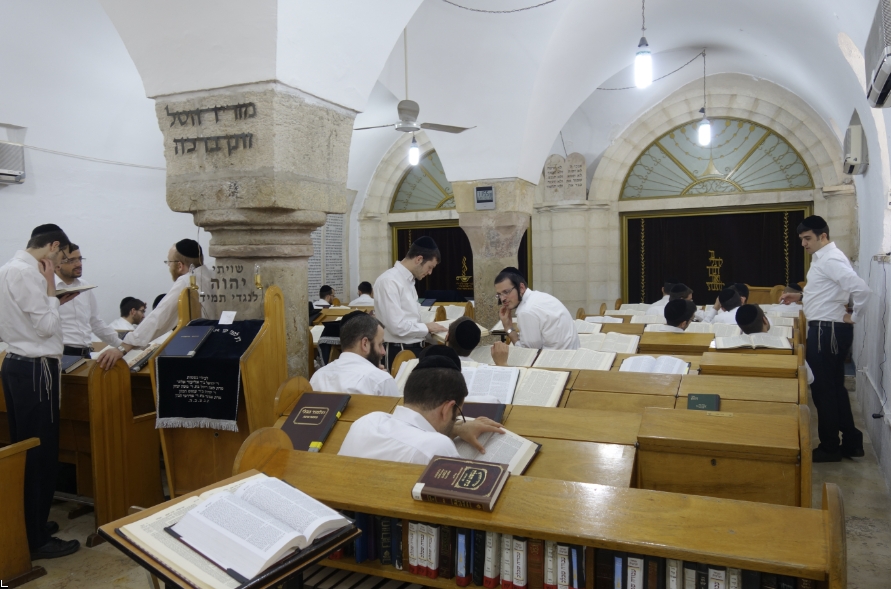 Ramban Synagogue (Photo: Michael Jacobson)
Ramban Synagogue (Photo: Michael Jacobson)"The synagogue has several unique features compared to the known synagogues, such as a pair of niches at the end of the hall facing east, which probably served as two Holy Arks. The reason for two Arks was due to the Muslim government's decree requiring synagogues to store the Qur'an. Since Jews refused to store Qur'ans in the Holy Arks, they created two niches – one for the sacred books and the other for the Qur'an. It's also interesting to see four different columns in the synagogue hall, each with a distinct design and style taken from ancient buildings in the area."
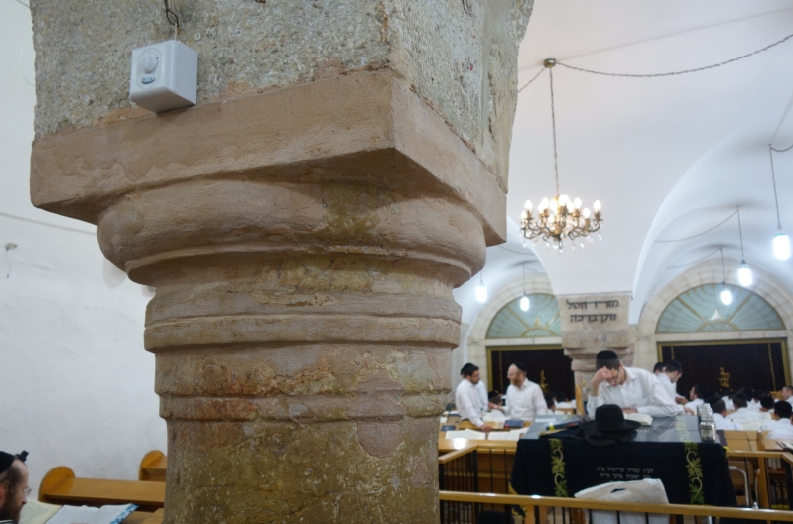 (Photo: Michael Jacobson)
(Photo: Michael Jacobson)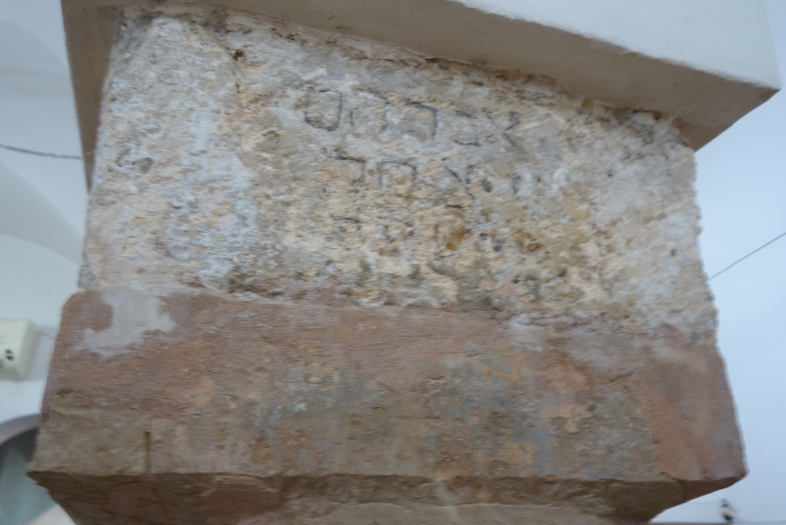 (Photo: Michael Jacobson)
(Photo: Michael Jacobson)There is also a modern story he shares about a structure considered new, from just the last decade – the Itamar Yeshiva building: "For nearly 20 years, the high yeshiva in Itamar was housed in non-permanent structures," he notes. "About 15 years ago, the yeshiva administration decided to establish a permanent structure and approached architect Shmuel Ofer, whose son studied at the yeshiva at that time. The architect faced a significant challenge as the designated lot for the building had a steep slope. Ofer decided to utilize this for design needs by planning a tiered structure. However, the project did not move forward for various reasons, and the yeshiva continued in temporary buildings.
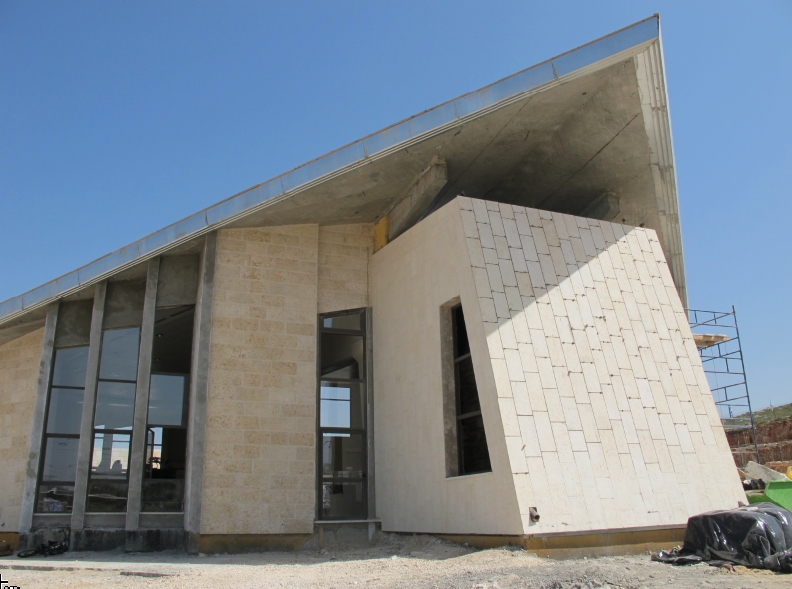 Yeshiva in Itamar (Photo: Michael Jacobson)
Yeshiva in Itamar (Photo: Michael Jacobson)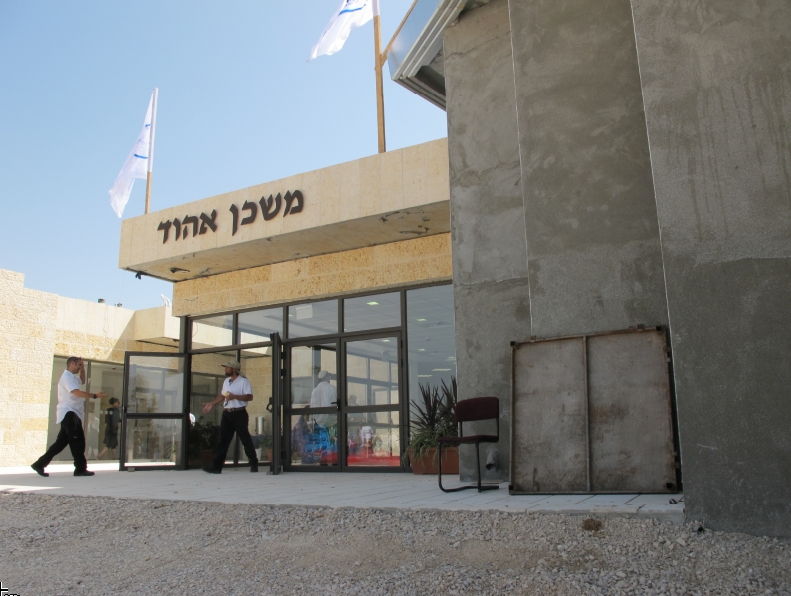 (Photo: Michael Jacobson)
(Photo: Michael Jacobson)"Then several severe attacks occurred in Itamar, during one of which five members of the Fogel family, may their memory be a blessing, were murdered. Rabbi Ehud Fogel, may his memory be a blessing, taught at the yeshiva at that time, and the yeshiva staff felt that establishing a permanent structure would be an appropriate response to the heinous murder. Therefore, they instructed to advance the plans, and just 30 days after the murder, a cornerstone ceremony for the yeshiva was held. Exactly one year later, the study hall building was inaugurated, becoming the largest and most impressive public structure built in the settlement until that time."
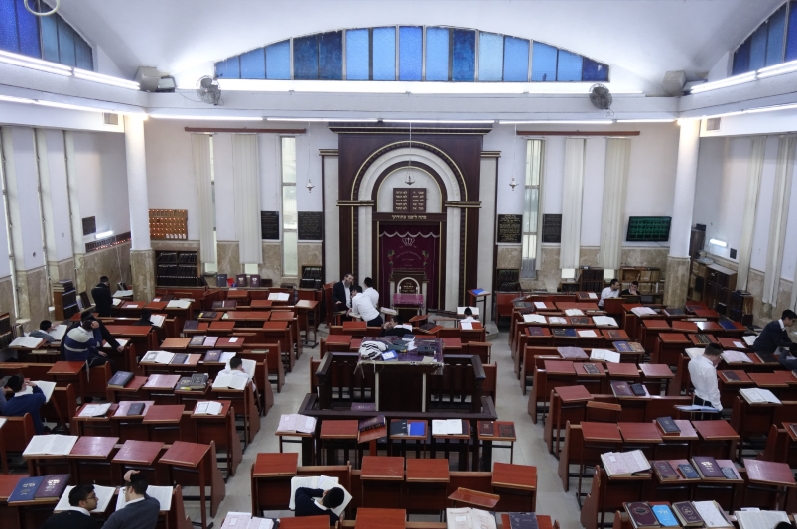 (Photo: Michael Jacobson)
(Photo: Michael Jacobson)
The Synagogue as Art
"Architecture, much like art, reflects the spirit of the times and local culture," explains Jacobson. "We all know that a building designed today wasn't designed twenty or thirty years ago, nor will it be in the future. The form of a structure and the manner in which it was built can teach us much about the spirit of the era, as well as the political, social, technological, and economic aspects reflected in them. Additionally, while writing about synagogues, I ensure to include not just the building's analysis but also the story of its surroundings and the architect who designed it. A synagogue can be like a work of art – we don't only delight in the painting's beauty, but also wish to know who the painter is and the meanings he sought to convey in his creation. That's why I almost always include the architects' stories."
From your experience, can you identify an architect based on the structure?
"It's not easy, as for an architect to be recognizable, they need a clear backbone and distinctive style. Few architects in Israel meet these criteria, making them easily identifiable. We also need to realize that most architects have been designing buildings here for decades, and during this time, their style changed. Nonetheless, some make their mark unmistakably."
Does having a building designed by a famous architect affect its financial value?
"When it comes to a building, whether it be a yeshiva, a private home, or a synagogue, its value is influenced by many factors. These include the exact location, level affected by environmental hazards, and additional considerations. When a building has architectural value, it can indeed influence its asset value. Alternatively, it might also detract from it, as buildings with high value must often be preserved, restricting any changes that may be necessary to improve their use."
What about your synagogue? You're invited to seek information about it in Jacobson's articles and his published architecture books, featuring fascinating articles on various topics. If you haven't found any, feel free to tell him about it. Perhaps your synagogue will become the next featured site.

